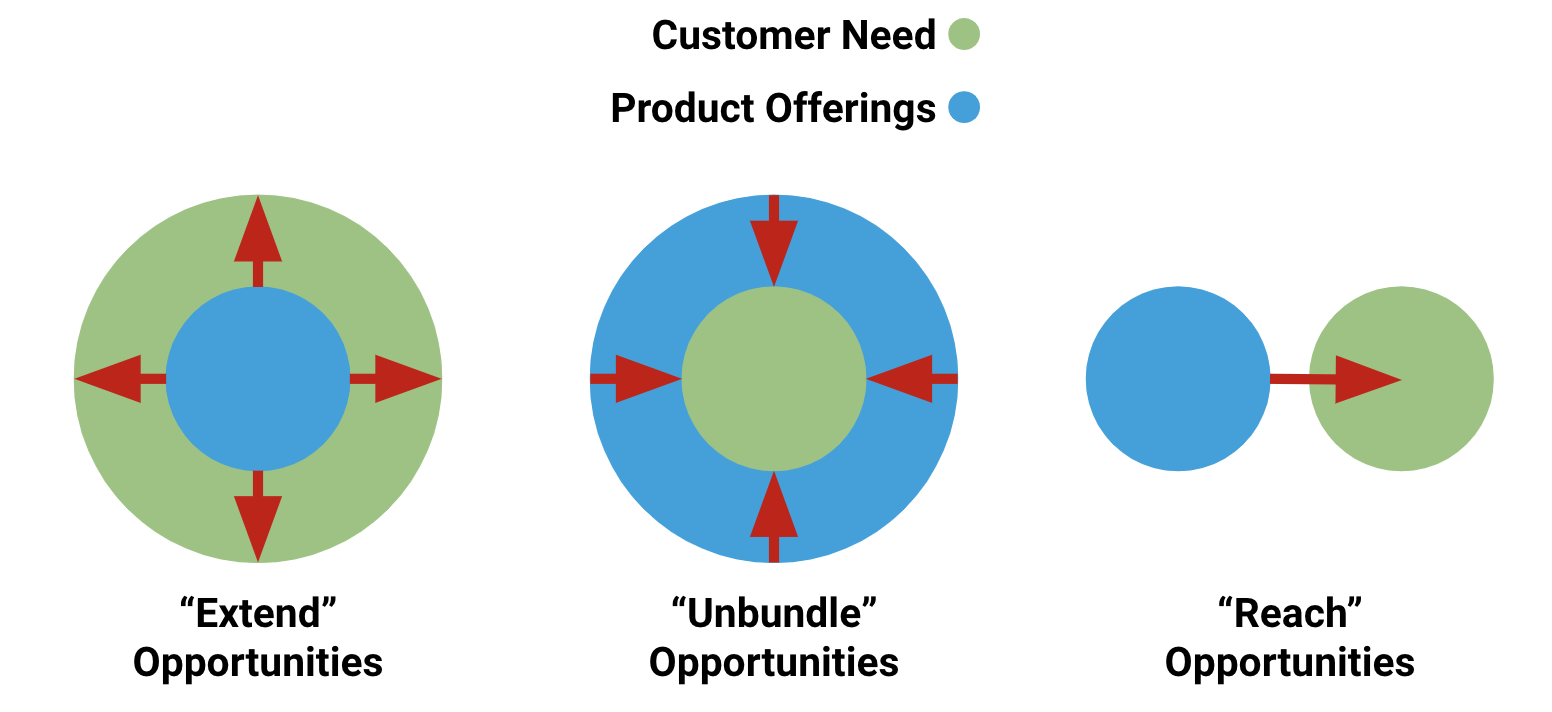Let’s face it: digital transformation isn’t about digitizing. Every company is already using digital information and software applications, and those who are converting paper records and processes to digital ones are hardly getting ahead of the curve. Digital transformation is about surviving and thriving in the digital economy. Where the 20th century industrial economy was relatively stable for successful corporations, this century’s economy is volatile. There is money to be made, but each coin has an opportunity on one side and a threat on the other. Established enterprises face an existential question when confronting digital transformation: how can we offer innovative products and solutions to compete with digital disruptors, without disrupting our current success?
Digital disruption
This question is at the heart of Clayton Christensen’s 1997 book, The Innovator’s Dilemma. In it, Christensen analyzes the impact of disruptive innovations in the high tech industry, and the practices and tendencies that caused some large incumbent enterprises to fail. In the current digital economy, this type of disruption is prevalent in every industry. Napster disrupted the music industry before self-destructing, paving the way for iTunes and Spotify. Perhaps most famously, Blockbuster’s empire has dwindled to one store while Netflix has grown into an entertainment conglomerate. Currently, ground transportation in all forms is being disrupted by Uber, Lyft, and the like. Almost every organization now faces the innovator’s dilemma.
Christensen’s 2003 followup, The Innovator’s Solution, proposes techniques that can be used to maintain market leadership and foster innovation in a disruptive environment. One of these is the “jobs-to-be-done” framework (JTBD), which approaches product management from the perspective of the customer’s problem to be solved rather than from the product’s functions and features. JTBD asks the question, “what job is your customer trying to complete in using your product?” As a simple illustration of the mindset, Christensen makes the point that, “People don’t want to buy a quarter-inch drill, they want a quarter-inch hole.” Viewing the decline of Blockbuster through the JTBD lens makes it clear: customers didn’t want to rent discs or cassettes from a store, they wanted the most convenient way to experience video entertainment at home.
The JTBD perspective can help organizations measure how effectively their products solve customers’ problems, and where the gaps are. Considering how important user experience is in the digital world, companies can ask the following practical questions to identify opportunities for innovation and potential vulnerabilities for disruption:
| Question: | Establishes: |
| Who are my customers and what jobs are they trying to complete? | The customer context |
| How completely and smoothly do my products and services help them complete those jobs? | Opportunities to extend the current offerings |
| Are my products and services overkill for my customers’ jobs? | Opportunities to unbundle the current offerings |
| Are there other customers with the same jobs to be done that I’m not reaching? | Opportunities to reach new customer segments through new channels |
The resulting three opportunity categories correspond with different relationships between customer needs and product offering capabilities, as depicted in Figure 1 below:

Let’s examine each these opportunity categories in more detail…
| Extend | When a customer’s JTBD or user experience needs are not completely realized by current product offerings, there is an opportunity for innovators to extend their solutions to fill the gaps. Think how rideshare companies have provided more visibility into ground transportation service, while also improving the ride request and payment experiences as compared to taxis. |
| Unbundle | When a customer’s JTBD is a small task that can be fulfilled more optimally than by current offerings, innovators can unbundle steps or features from their products to meet the need in a more streamlined way. Think about how Google built home page dominance around web search, when all of the other web portals at the time featured overloaded home pages with directories, multimedia, and more. |
| Reach | Companies that understand the JTBD’s that their products fulfill have an opportunity to seek new customer segments with similar needs, or new channels to reach their current customers. Slack originated as a social video game called Glitch, but its founders recognized that the game’s “special sauce” — collaboration — could be more appealing to a completely different and more monetizable audience in large business organizations. |
This is the farthest I’ve ever made it in a blog post without mentioning APIs! But the time has come…
Innovating with APIs
Organizations that adopt the API-led connectivity (ALC) approach are in the best position to take advantage of all three innovation opportunity categories. If you are looking to extend your products and solutions to help a customer complete their JTBD, you can easily plug in API-enabled services — either your own or from third parties. If you have built your digital products as a composition of API products, you can easily unbundle capabilities to streamline your customers’ experience. Lastly, the headless nature of APIs makes them easy to repurpose for new customer communities and and reach them through new digital channels.
There are plenty of examples of APIs being used in each of these innovation categories. Netflix’s APIs allowed them reach customers on a plethora of platforms, and continuously enhance the user experience through services like recommendations and even personalized thumbnail images for shows. Global credit risk insurance provider Euler Hermes unbundled a corporate financial evaluation capability into a “traffic light API,” allowing them to reach prospective new clients with less friction. API first companies like Spotify reached new customers by getting into the first wave of smart home speaker services. In an example that encompasses all three categories, McDonald’s extended their customer experience through McDelivery. This service was launched rapidly thanks to Uber unbundling their transportation services, reaching a new market in food delivery, and integrating with McDonald’s through APIs.
CURE for the Innovator’s Dilemma
We use this approach to discovering API-enabled innovation opportunities in the MuleSoft API Strategy Workshop. In our “CURE” exercise, we go through the following steps to apply it (a slight reordering of the JTBD questions above):
C – What is the customer context?
U – What are the “Unbundle” opportunities?
R – What are the “Reach” opportunities?
E – What are the “Extend” opportunities?
It is straightforward, but so far the results have been extraordinary in the workshops we have conducted. Like twelve notes in a chromatic musical scale, simple constraints and structure can often lead to phenomenal creativity. We’re excited to apply this approach with many more organizations, and to help them realize the resulting innovation opportunities. If you are interested in attending a public workshop or hosting one for your organization, please let us know!
Thanks to Holger Reinhardt and Irakli Nadareishvili for introducing me to JTBD and applying it to API product management.









